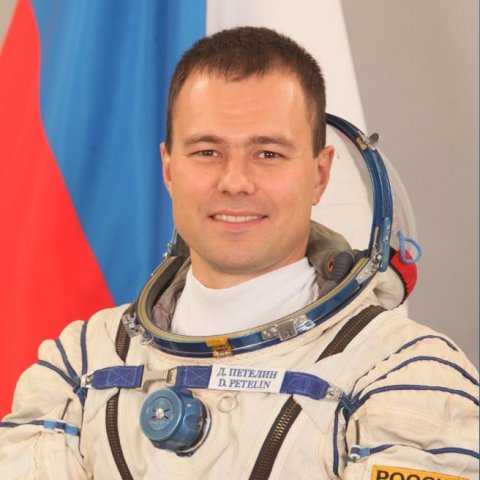Opening of the International Summer School on Asteroid Safety took place at South Ural State University on July 1st. Project events are targeted at knowledge and skills development in professional activity of future specialists in the sphere of aerospace engineering.
Attendees of the International Summer School are international students and high school students. Within two weeks, they are going to attend lectures of leading scientists in the sphere of meteorite and asteroid studies, visit lab and practical classes, and make excursions to research and education centres of SUSU.
Rector of South Ural State University, Doctor of Sciences (Engineering), Professor Aleksandr Shestakov delivered a welcoming speech:
“Dear students and employees! This project is very important for our university. From the one hand, SUSU aspires to make project-based learning implemented within its walls to be of high level, so that students after their graduation would be ready to solve the most difficult problems. On the other hand, the direction connected with aerospace activity is one of the most prioritized at our university and is included into the strategy of its development. Besides, the Faculty of Aerospace Engineering is one of the oldest faculties at SUSU. Therefore, we consider this project, which is carried out at our university in such a format for the first time, to be very important. I wish the International Summer School on Asteroid Safety and its attendees success!”
.jpg)
.jpg)
On the first day of the International Summer School’s operation, students and schoolchildren had a meeting with a researcher of the Astronaut Corps, Dmitry Petelin, who provided a detailed description of all stages of astronauts’ training and the physical and professional skills that a man needs to possess in order to go to space.
“It feels nice making a speech in my Alma mater in front of today’s and future students. Having gotten a higher engineering education, I managed to get recruited into the Astronaut Corps. This activity is connected with operation of space equipment and, at a smaller extent, with tests and project activity. Based on my own experience, I would like to talk about how to get into the Astronaut Corps and accomplish the goal set. In average, the path from the desire to become an astronaut to becoming a candidate to astronauts and further examinations takes 9 to 10 years, and the competition during selection is very strong. The knowledge that I acquired at SUSU’s Faculty of Aerospace Engineering, were essentially helpful in that period as well as in my further professional activity,” notes Dmitry Petelin.
.jpg)
In the course of his master-class, the astronaut-researcher provided a detailed description of all stages of training that each candidate to astronauts is to pass. For example, the selection lasts about half a year and includes physical training (swimming, running, vestibular stability tests, etc.); an interview which reveals not only professional knowledge but also the knowledge of disciplines taught at schools and universities, and a medical selection. Further training of a candidate to astronauts takes from one year and a half to two years; within this training, candidates undergo tests in a desert, in the ocean, in marshland, under conditions of gravitation and nonearthly atmosphere, as well as parachute training, etc. The finishing stage includes a state examination, upon successful completion of which a candidate receives the astronaut’s certificate.
After the state examination, polishing of professional skills and knowledge goes on, and, while at the space station, astronauts carry out various research in the following spheres: Physical and Chemical Processes and Materials under Space Conditions; Research of the Earth and the Space; A Man in Space; Space Biology and Biotechnology; Technologies for Space Exploration; Education and Popularization of Space Research. Besides, they work on melting of materials and growing of crystals, notes Dmitry Petelin.
.jpg)
Upon completion of the master-class, the astronaut-researcher answered some questions from students and schoolchildren regarding the actions of an astronaut under critical conditions and the prospects of going to Mars. He also held a meeting with university applicants who are planning to get enrolled to South Ural State University in 2019.
After the master-class, attendees of the International Summer School listened to a lecture read by Viktor Gorokhovsky, a Professor at Ural Federal University, member of the Meteorite Committee of Russian Academy of Sciences and the International Meteor Organization:
“The topic of my lecture is ‘The Meteorite – Asteroid interrelation. Extraterrestrial Substance at the Laboratory’. Today we are talking about asteroid safety but we don’t know which extraterrestrial substance is threatening us. This can only be determined through research of meteorites. In my lecture, I tried to tell the audience about recent research carried out after the fall of the Chelyabinsk meteorite, as well as to describe our work and research in the sphere of extraterrestrial substance.”
.jpg)
.jpg)
The last activity of the first day of the International Summer School’s operation were excursions to SUSU’s Educational Center of Rocket and Space Equipment named after V.P. Makeev, Mechanical Engineering REC and Composite Materials and Structures REC. Attendees of the School had a chance to get familiar with exhibit items of space apparatuses and rockets, presented at the open exposition, and learn about spheres of activity and the unique equipment of the research and education centres of South Ural State University.




